Scroll through our pest identification directory to find out additional information about the pest that is bothering your home or business.
Crawling Insects
Ants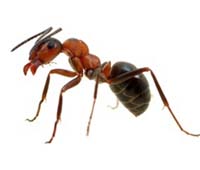 |
Bed Bugs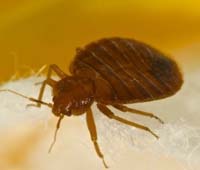 |
Centipede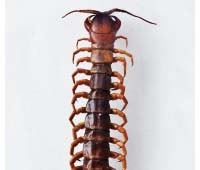 |
Cockroach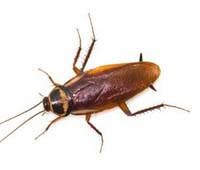 |
Cricket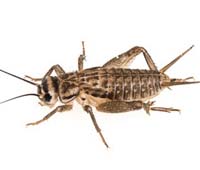 |
Fleas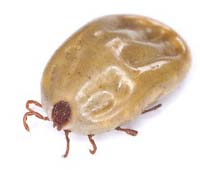 |
Silverfish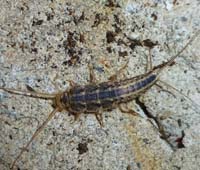 |
Spiders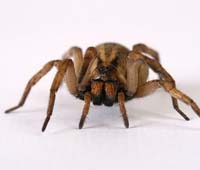 |
Termites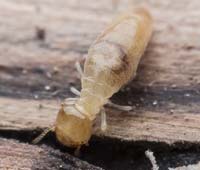 |
Ticks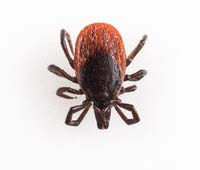 |
Flying Insects
Bees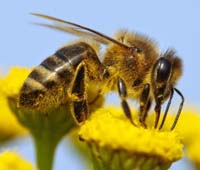 |
Flies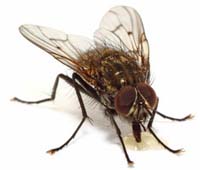 |
Hornets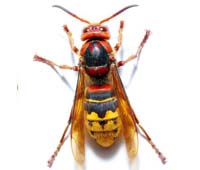 |
||
Moth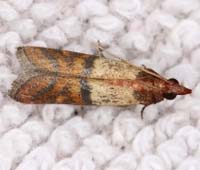 |
Wasps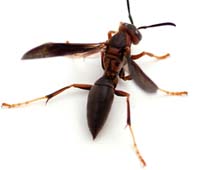 |
Yellow Jackets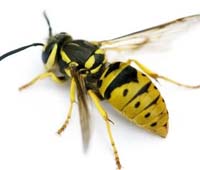 |
Wildlife
Chipmunk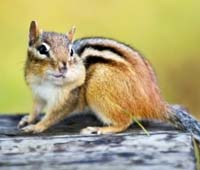 |
Groundhog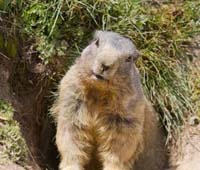 |
Moles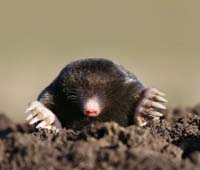 |
Mouse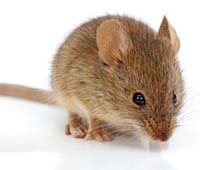 |
Rats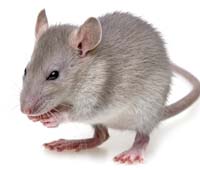 |
Skunks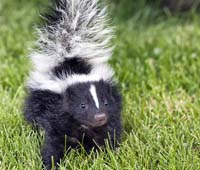 |
Squirrel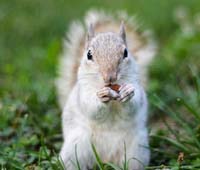 |
Racoon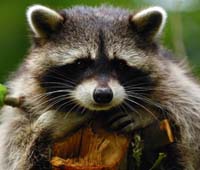 |
Carpenter Ants
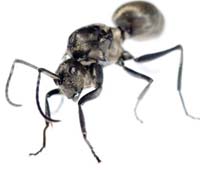 COLOR: Red to black
COLOR: Red to black
LEGS: 6
SHAPE: Segmented, oval
SIZE: 5/8"
ANTENNAE: True
DESCRIPTION: Carpenter ants get their name because they excavate wood in order to build their nests. Their excavation results in smooth tunnels inside the wood. Carpenter ants range in size from one-quarter inch for a worker ant to up to three-quarters inch for a queen.
THREATS: Carpenter ants damage wood through their nest building. If they gain entry to a structure, they pose a property threat.
Little Black Ants
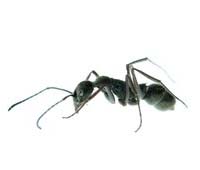 COLOR: Black
COLOR: Black
LEGS: 6
SHAPE: Segmented; oval
SIZE: 1 – 5 mm
ANTENNAE: True
DESCRIPTION: The little black ant (Monomorium minimum) is a species of ant native to North America.[1] It is a shiny black color, the workers about 1 to 2 mm long and the queens 4 to 5 mm long. It is a monomorphic species, with only one caste of worker, and polygyne, meaning a nest may have more than one queen. A colony is usually moderately sized with only a few thousand workers
Pavement Ants
 COLOR: Dark brown to black
COLOR: Dark brown to black
LEGS: 6
SHAPE: Segmented, oval
SIZE: 1/8"
ANTENNAE: True
DESCRIPTION: Pavement ants get their name because they make their nests in or under cracks in pavement. They can infest structures. These ants will eat almost anything, including insects, seeds, honeydew, honey, bread, meats, nuts and cheese.
THREATS: These ants do not pose a public health risk, but they can contaminate food and should be avoided.
Centipedes
 COLOR: Yellowish to dark brown, sometimes with darker stripes or markings
COLOR: Yellowish to dark brown, sometimes with darker stripes or markings
LEGS: 15 pair
SHAPE: Elongated, flattened, worm-like
SIZE: 1/8 – 6”
ANTENNAE: True
DESCRIPTION: Centipedes are sometimes called “hundred-leggers” because of their many pairs of legs, but they can actually have anywhere from 15-177 pairs of legs, depending on the species. Interestingly, centipedes always have an odd number of pairs of legs. Most centipedes are nocturnal, and prey primarily on flies, spiders, and sometimes plant tissue.
THREATS: Centipedes are generally considered nuisance pests, as they do not pose significant health or property threats. However, all centipedes have poison jaws with which they inject venom into their prey. If handled roughly, some larger species can inflict a painful bite that can break human skin and causes pain and swelling, similar to a bee sting.
American Cockroach
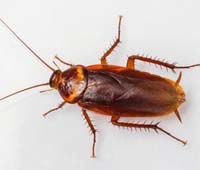 COLOR: Reddish brown, with a yellowish figure 8 pattern on the back of the head
COLOR: Reddish brown, with a yellowish figure 8 pattern on the back of the head
LEGS: 6
SHAPE: Oval
SIZE: 2"
Antennae: True
DESCRIPTION: The American cockroach is the largest of the house-infesting cockroaches. American cockroaches are found in food processing areas and food storage areas, as well as other types of buildings. They are active when the temperature is 70 degrees or higher, but they can survive lower temperatures with the right conditions. American cockroaches are often found in sewers and basements, particularly around pipes and drains.
German Cockroach
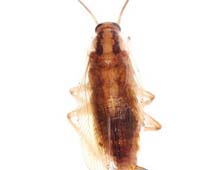 COLOR: Reddish brown, with a yellowish figure 8 pattern on the back of the head
COLOR: Reddish brown, with a yellowish figure 8 pattern on the back of the head
LEGS: 6
SHAPE: Oval
SIZE: 2"
ANTENNAE: True
Description: The German cockroach is the most economically important urban pest. It is the most common cockroach species in houses, apartments, restaurants, hotels, and other institutions throughout the United States. Adults of both sexes have well-developed wings, but they never fly. Adult females carry the egg capsule protruding from the rear of the abdomen until the eggs are ready to hatch. Nymphs have habits similar to those of adults. They are active mostly at night but hide in dark crevices during the day. If German cockroaches are seen during the day, the population is probably so large that the available cracks are already full, or food and moisture are in such short supply that daytime foraging is necessary. The German cockroach is a general feeder but is particularly attracted to fermented foods and beverage residues.
Oriental Cockroach
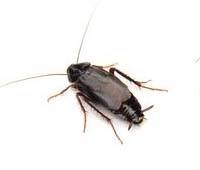 COLOR: Dark brown or black
COLOR: Dark brown or black
LEGS: 6
SHAPE: Oval
SIZE: 1"
ANTENNAE: True
Description: Oriental cockroaches are known for their preference of feeding on garbage, filth or material that has begun to decay. These cockroaches are very dependent upon water. While studies have shown that they can survive for up to a month without food, these insects can not survive for more than two weeks without water.Although their natural habitat is outdoors, they may infest homes in summer. Inside, they tend to remain on lower floors. Like other cockroach species, Oriental cockroaches are omnivorous and thrive by scavenging for food crumbs and decaying plants and animals. Oriental cockroaches tend to gather in large numbers near water sources.
Wood Cockroach
 COLOR: Chestnut Brown
COLOR: Chestnut Brown
LEGS: 6
SHAPE: Oval
SIZE: 3/4” – 1 1/4"
ANENNAE: True
DESCRIPTION: The adults, especially the males, appear tan because of the color of their wings. Adults and large nymphs of the wood roach can be recognized by a pale, creamy white or transparent stripe on their outer edge. The pale edge extends onto the first 1/3 of the front wings of the adults. These roaches are attracted to light which makes them different from other roaches. Females produce about 950 eggs a year, with one generation. Eggs hatch in the summer and mature the following spring. A life cycle can last 2 years. Adults are present May through early October. The roaches do not survive inside buildings. In wooded areas, these roaches can be seen in the headlights of automobiles at dusk. The males are attracted to lights. They are active during the winter and are often found in firewood. They live in moist woodland areas. They do not come inside unless carried inside with firewood or they may wander in on their own. These roaches are not startled and begin scampering when approached. These outside roaches do not reproduce inside like the German roach. They need consistent moist conditions in their environment such as under decaying logs, wood piles or loose bark. If they are inside, it is only a temporary condition.
Cave (House) Crickets
 COLOR: Yellowish brown with 3 dark cross-bands on head
COLOR: Yellowish brown with 3 dark cross-bands on head
LEGS: 6
SHAPE: Long with short, stout hind legs; threadlike antennae, longer than body
SIZE: 3/4- 7/8”
ANTENNAE: True
DESCRIPTION: The name house cricket comes from the fact that these crickets often enter houses where they can survive indefinitely. House crickets are reared in commercial cricket factories and sold in bait and pet stores. House crickets are nocturnal and usually hide in dark, warm places during the day. Male house crickets chirp and attract females by rubbing a scraper on the inner edge of the left wing against the teeth of a file beneath the right wing. Outside, crickets are attracted to bluish electric lights and can often be seen swarming near them in large numbers. They feed on plants and dead or live insects, including other crickets.
THREATS: When crickets find their way inside homes, they can damage clothing, carpeting and other fabrics including wool, cotton, silk, and synthetics. They can eat through large areas of fabric, and are especially attracted to clothes soiled with perspiration.
Silverfish
 COLOR: Silver to brown
COLOR: Silver to brown
LEGS: 6
SHAPE: Oval, elongated
SIZE: 3/4“
ANTENNAE: True
DESCRIPTION: This insect gets its name from its silvery, metallic appearance and fish-like shape and movements. Silverfish have no wings, but are able to run very fast. They tend to hide their presence from humans which means any damage they have caused could go unnoticed as well. Silverfish tend to feed on paper items, glue, clothing and food items, such as flour and rolled oats. Silverfish can live up to a year without food, but require a high humidity environment. They move fast and are typically nocturnal.
THREATS: While silverfish are mainly a nuisance pest, they can contaminate food and damage paper goods such as wall paper and books.
Black Widow Spiders
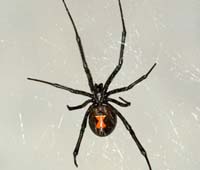 COLOR: Black, with characteristic red "hourglass" on back
COLOR: Black, with characteristic red "hourglass" on back
LEGS: 8
SHAPE: Round
SIZE: 3/4 – 3/8“
ANTENNAE: False
DESCRIPTION: Black widow spiders are most recognized for the red hourglass shape under their abdomen. Contrary to legend, female black widow spiders rarely devour the male black widow spider after mating. Habits Black widow spiders spin their webs near ground level. They often build their webs in protected areas, such as in boxes and in firewood.
THREATS: The venom of a black widow spider is a neurotoxin and is used as a defense. Black widow spiders do not bite humans instinctively. The black widow spider bite can cause severe pain. Young children and the elderly are especially susceptible to a severe reaction to a black widow spider bite.
Brown Recluse Spiders
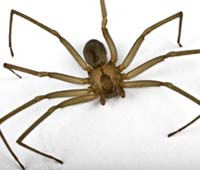 COLOR: Light to dark brown, with characteristic dark brown violin marking on back
COLOR: Light to dark brown, with characteristic dark brown violin marking on back
LEGS: 8
SHAPE: Round
SIZE: 5/8“
ANTENNAE: False
DESCRIPTION: Brown recluse spiders have a characteristic dark brown violin marking on their back. Brown recluse spiders are nocturnal and eat other bugs like cockroaches and crickets. Male brown recluse spiders wander farther than females and will crawl into shoes or other clothing.
THREATS: Like the black widow spider, the brown recluse spider bites in defense and does not bite humans instinctively. They will bite humans when the clothing they are hiding in is worn. The brown recluse spider bite is painful and can produce an open, ulcerating sore.
House Spiders
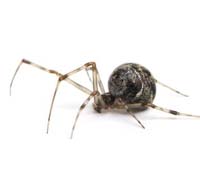 COLOR: Yellowish brown, abdomen dirty white with a few dark spots (sometimes with a black triangular spot in the center) to almost black, with several dark stripes meeting at angle above tip of abdomen; legs
COLOR: Yellowish brown, abdomen dirty white with a few dark spots (sometimes with a black triangular spot in the center) to almost black, with several dark stripes meeting at angle above tip of abdomen; legs
LEGS: 8
SHAPE: Elongated abdomen
SIZE: 3/16 – 5/16“
ANTENNAE: False
DESCRIPTION: This is usually the spider most often encountered indoors. It is a nuisance pest, probably more because of its webs than the spider itself. This spider is found worldwide and is common throughout the United States and Canada. The house spider randomly selects its web sites and creates a tangled web. If a web does not yield prey it is abandoned, another site is selected, and a new web is built. Survival is low in modern homes with low humidity and few insects, higher in garages, sheds, barns, warehouses, etc. because of more prey and generally higher humidity, and highest outdoors in protected places.
THREATS: House spiders are nuisance pests but pose no threats to humans.
Wolf Spiders
 COLOR: Usually dark brown, often with paler stripes or markings, or sometimes yellow with dark stripes or markings.
COLOR: Usually dark brown, often with paler stripes or markings, or sometimes yellow with dark stripes or markings.
LEGS: 8
SHAPE: Stout-robust body with long, spiny legs
SIZE: 3/8 – 1 3/8“ (female) 1/4 – 3/4“ (male)
ANTENNAE: False
DESCRIPTION: Wolf spiders are hunting spiders and will chase their prey. These spiders are often big and hairy which alarms some people, but they are primarily nuisance pests. Over 100 species occur in the United States and Canada. Wolf spiders actively hunt during the night and sometimes during the day. They are fast on their feet and pursue prey. Because of these habits, they are commonly seen by people.
THREATS: Because wolf spiders feed on a variety of insects, including crop pests, they can be beneficial. Wolf spiders can bite, but their bites are extremely rare. They will only bite if they are handled. The presence of wolf spiders in homes is usually accidental.
Bed Bugs
 COLOR: Unfed adults are mahogany to rusty brown; engorged bed bug is red-brown after a blood meal. Nymphs (baby bed bugs) are nearly colorless when they first hatch and become brownish as they mature.
COLOR: Unfed adults are mahogany to rusty brown; engorged bed bug is red-brown after a blood meal. Nymphs (baby bed bugs) are nearly colorless when they first hatch and become brownish as they mature.
LEGS: 6
SHAPE: Unfed bed bugs are flat; broad oval; fed bed bugs become swollen and more elongated.
SIZE: Adult bed bugs are about 1/4 inch long. Nymphs (baby bed bugs) range from 1.3 mm to 4-5 mm.
ANTENNAE: True
DESCRIPTION: The common bed bug (Cimex lectularius Linnaeus 1758) is an ectoparisite insect (a parasite which lives on the outside of the body of the host) of the family Cimicidae. Bed bugs feed only on the blood of humans and other warm-blooded hosts. Although they have a cryptic behavior and can conceal themselves in tight cracks and crevices, bed bugs are often found in bed parts, such as mattresses and box springs, hence the common name.
THREATS: Although bed bugs can dine on any warm-blooded animal, they primarily dine on humans. Bed bugs do not transmit diseases, but their bites can become red, itchy welts.
Carpenter Bees
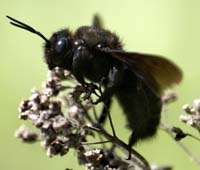 COLOR: Blue-black, green or purple metallic sheen on abdomen.
COLOR: Blue-black, green or purple metallic sheen on abdomen.
LEGS: 6
SHAPE: Oval, bee shape
SIZE: 1"
ANTENNAE: True
DESCRIPTION: Carpenter bees look like typical bumblebees but often lack yellow stripes. They are solitary bees. Unlike bumble bees, carpenter bees are solitary insects. Female carpenter bees will chew a tunnel into a piece of wood to build a nest gallery. The bits of wood she chews and deposits outside the nest are called frass. The male carpenter bee guards the outside of the nest. He does not have a stinger, but his constant buzzing causes concern for some.
THREATS: Carpenter bees do not pose a public health threat, but they can damage wood through their nest building.
Honeybees
 COLOR: Predominantly golden-yellow with brown bands
COLOR: Predominantly golden-yellow with brown bands
LEGS: 6
SHAPE: Oval, bee shape
SIZE: 1/2"
ANTENNAE: True
DESCRIPTION: Honey bees are social insects found all over the world. They are an extremely important beneficial insect because of their role in pollination. Honey bees pollinate more than 100 crops in the U.S. Honeybees are active pollinators, and produce honey which feeds their young in colder months. The honeybee is the only social insect whose colony can survive many years. Honeybees produce honey from pollen and nectar of the plants they pollinate. They store the honey in honeycombs in their nests. They often build their nests in tree crevices, but will occasionally build nests in attics or chimneys.
THREATS: Honeybees do sting, but they only sting once. The sting can be extremely painful if the stinger is not immediately removed from the sting. Persons allergic to insect stings will have a more severe reaction.
Fleas
 COLOR: Dark reddish-brown
COLOR: Dark reddish-brown
LEGS: 6
SHAPE: Flat
SIZE: 1/12" - 1/6"
ANTENNAE: True
DESCRIPTION: Fleas are parasites that feed on the blood of any warm-blooded body. The most common species is the cat flea, which often feasts on cats, dogs and humans. Fleas transport themselves on rodents and other mammals. They infest both household pests and wild animals. Fleas use their powerful legs to jump as high as 8 inches vertically and 16 inches horizontally. Fleas usually remain on their warm-blooded hosts at all times. They can also be found on shoes, pant legs, or blankets, which can transfer the fleas to new environments. They are often found infesting opossums, raccoons, and skunks in urban settings.
THREATS: Fleas are the most common transmitter of the rare Bubonic Plague. They also transmit the bacterial disease murine typhus to humans through infected rats. Their saliva can cause serious Flea Alergy Dermatitus in pets, and their debris has been reported to cause similar allergic reactions in humans. Fleas can also transfer tapeworms and cause anemia in pets. Flea bites commonly cause painful, itchy red bumps.
Fruit Flies
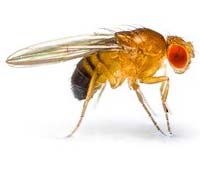 COLOR: Tan/ light abdomen
COLOR: Tan/ light abdomen
LEGS: 6
SHAPE: Small oval
SIZE: 1/8"
ANTENNAE: True
DESCRIPTION: Fruit flies feed on decaying fruits and vegetables. Fruit flies feed on decaying matter, especially fruits and vegetables. Fruit flies are small pests that are commonly found in homes, restaurants and other facilities where food is processed. They are found on moist, decaying matter that has been stationary for several days.
THREATS: Fruit flies are found in unsanitary conditions, so they are a potential health concern, especially when present in health facilities.
House Flies
 COLOR: Dark gray
COLOR: Dark gray
LEGS: 6
SHAPE: Small oval
SIZE: 1/4"
ANTENNAE: True
DESCRIPTION: House flies get their name from being the most common fly found around homes. Adult house flies can grow to one-quarter of an inch long and usually live between 15 and 25 days. They are only able to feed on liquids but have the ability to turn many solid foods into a liquid for them to eat. House flies taste with their feet, which are 10 million times more sensitive to sugar than the human tongue.
THREATS: These insects have been known to carry over 100 different kinds of disease-causing germs, which makes them very bad house guests.
Blacklegged (Deer) Ticks
 COLOR: Dark brown to black body
COLOR: Dark brown to black body
LEGS: 8
SHAPE: Flat; broad oval
SIZE: 1/8“
ANTENNAE: False
DESCRIPTION: The blacklegged tick is named for its dark legs, which are a contrast to its pale body. Blacklegged ticks are sometimes called deer ticks. These ticks like to feed on the blood of white-tailed deer, which is why they are sometimes called deer ticks.
THREATS: Blacklegged (deer) ticks can spread Lyme disease.
Indian Meal Moths
 COLOR: Copper reddish coloring on outer part of wings
COLOR: Copper reddish coloring on outer part of wings
LEGS: 6
SHAPE: Elongated oval
SIZE: 5/8”
ANTENNAE: True
DESCRIPTION: The Indian meal moth was given its name after an insect scientist found it feeding on corn meal, also known as Indian meal. From wing tip to wing tip, adult moths measure from five-eighths of an inch to three-fourths of an inch long. These moths like to feed on dried fruits, grains, seeds, nuts, chocolate, candies, bird seed, dog food, powdered milk, dried red peppers and candy.
THREATS: Indian Meal Moths infest foods and can contaminate food products.
Bald-faced Hornets
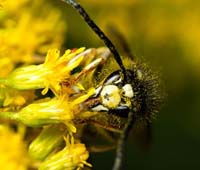 COLOR: Black with a white pattern on most of the face
COLOR: Black with a white pattern on most of the face
LEGS: 6
SHAPE: Long, wasp-like
SIZE: 1/2 – 5/8”
Antennae: True
DESCRIPTION: This atypically large black-and-white relative of the yellow jacket gets its common name from its largely black color but mostly white face. It is named a hornet because of its large size and aerial nest. Bald-faced hornets are social insects, although not true hornets. They live in colonies that may contain between 100-400 members at their peak. They usually appear in late summer.
Threats: Bald-faced hornets are aggressive and will attack anyone or anything that invades their space. They have smooth stingers, so they can sting over and over again. Their stings also carry venom that makes the stings hurt, itch, or swell for about 24 hours. Humans are at the same risk of allergic reactions from a Bald-faced hornet stings as with other insect stings.
European Hornets
 COLOR: Brown with yellow abdominal stripes and pale face
COLOR: Brown with yellow abdominal stripes and pale face
LEGS: 6
SHAPE: Long, robust, wasp-like
SIZE: 3/4 – 11/2”
ANTENNAE: True
DESCRIPTION: This hornet (also called Giant hornet) gets its common name from its introduction from Europe into the New York area in the 1800’s. European hornets are much larger than yellow jackets and unlike most stinging insects, can be active at night. European hornets are social insects and live in colonies that may contain between 200-400 members at their peak. They usually appear in late summer. They prey on a variety of large insects such as grasshoppers, flies, yellow jackets and honeybees. They also eat tree sap, fruit, and honeydew. European hornets are attracted to light and are known to repeatedly bang on lighted windows at night.
THREATS: European hornets can do a great deal of damage to trees and shrubs because they strip the bark to get to the sap. They also use the bark fiber to build their nests. They have smooth stingers, so they can sting over and over again. Their stings also carry venom that makes the stings hurt, itch, or swell for about 24 hours. A European hornet sting has the same risk of allergic reactions as with other insect stings.
Yellow Jackets
 COLOR: Abdomen usually black and yellow pattered similar to bands
COLOR: Abdomen usually black and yellow pattered similar to bands
LEGS: 6
SHAPE: Wasp-like
SIZE: 3/8“-5/8"
ANTENNAE: True
DESCRIPTION: There are several species of yellow jackets. These flying insects typically have a yellow and black head/face and patterned abdomen. Many say, the pattern resembles stripes. Signature to species, the abdomen pattern can help an entomologist or pest professional identify specific types of yellow jackets. Habits Yellow jackets nest in the ground or in cavernous areas such as eaves, attics, etc.... They feed on sweets and proteins and commonly invade outdoor activities.
THREATS: Yellow jackets pose significant health threats to humans as they may sting repeatedly and can cause allergic reactions. Stinging insects send over 500,000 people to the emergency room each year.
Open (Organ) Pipe Mud Daubers
 COLOR: Usually black, may have pale markings or a metallic luster
COLOR: Usually black, may have pale markings or a metallic luster
LEGS: 6
SHAPE: Long and slender with a thread-like waist
SIZE: 1/2"-1"
ANTENNAE: True
DESCRIPTION: This group of wasps gets its common name from the fact that they construct their nest of mud. Mud daubers are found throughout the United States. Mud daubers are solitary wasps. They are not social and do not live in colonies. Mud daubers provision spiders for their larvae by paralyzing them with their venom and bringing them into their nests.
THREATS: Mud daubers do not defend their nests and only rarely sting. They are typically considered nuisance pests, and are actually beneficial as they help control spiders.
Black & Yellow Mud Daubers
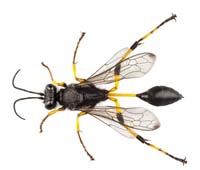 COLOR: Black and yellow
COLOR: Black and yellow
LEGS: 6
SHAPE: Long and slender with a thread-like waist
SIZE: 1/2"-1"
ANTENNAE: True
DESCRIPTION: This group of wasps gets its common name from the fact that they construct their nest of mud. Mud daubers are found throughout the United States. Mud daubers are solitary wasps. They are not social and do not live in colonies. Mud daubers provision spiders for their larvae by paralyzing them with their venom and bringing them into their nests.
THREATS: Mud daubers do not defend their nests and only rarely sting. They are typically considered nuisance pests, and are actually beneficial as they help control spiders.
Chipmunks
 COLOR: Reddish-brown coat
COLOR: Reddish-brown coat
LEGS: 4
SHAPE: Small rodent with two tan and five blackish stripes on the back
SIZE: 5 to 6 inches, weighing 3 oz.
ANTENNAE: False
DESCRIPTIONS: Most people see chipmunks as cute and harmless but they can do damage around structures. Chipmunks feed on a variety of foods including mushrooms, insects, nuts, grains, and berries. There are typically 2 to 10 animals per acre but can become very severe in an urban setting with the proper environment. They have their young in April or May and then again in August to October. They are usually active during the early morning and late afternoon.
THREATS: Their extensive burrowing can cause collapsed walls or slabs. They can also damage flower and vegetable gardens. When they tunnel next to a foundation and the tunnels flood due to heavy rains, the homeowner can experience water in the basement or other sub structure. They can get into buildings but it is rare.
Groundhogs
 COLOR: Greyish brown
COLOR: Greyish brown
SIZE: 16"-27"
DESCRIPTION: The groundhog, also known as a woodchuck, or in some areas as a land-beaver, is a rodent of the family Sciuridae, belonging to the group of large ground squirrels known as marmots. Groundhogs are well adapted for digging, with short but powerful limbs and curved, thick claws. Unlike other sciurids, the groundhog's spine is curved, more like that of a mole, and the tail is comparably shorter as well – only about one-fourth of body length. Suited to their temperate habitat, groundhogs are covered with two coats of fur: a dense grey undercoat and a longer coat of banded guard hairs that gives the groundhog it’s distinctive "frosted" appearance.
THREATS: Groundhogs can destroy your lawn or garden with their excessive digging habits. They will also eat leafy vegetables out of your garden.
Mole
 COLOR: Taupe
COLOR: Taupe
SIZE: Up to 6”
DESCRIPTION: Moles have long, curved claws which the moles use to burrow underground. Moles can quickly create long tunnels under the surface of the earth and the tunnel entrances can easily be identified by the mounds of earth that appear (normally all over your garden lawn)! These mounds of soil are commonly known as mole hills.
THREATS: Moles do not pose any health-related concerns to humans. The thing that makes moles a pest is that they can devastate a lawn with mounds. These mounds can be either high or round or in the form of “running” tunnels.
House Mice
 COLOR: Light brown to black
COLOR: Light brown to black
SIZE: 3"
DESCRIPTION: The house mouse is the most common rodent pest in most parts of the world. It can breed rapidly and adapt quickly to changing conditions. House mice can breed throughout the year and can share nests. House mice live in structures, but they can live outdoors.
THREATS: Micro droplets of mouse urine can cause allergies in children. Mice can also bring fleas, mites, ticks and lice into your home. Mice gnaw on wood, paper, cloths, books, insulation, and wiring. They contaminate our food with their urine and feces and can carry a wide variety of diseases transmissible to humans.
Rats
 COLOR: Grey, brown, or black
COLOR: Grey, brown, or black
SIZE: 11"-12"
DESCRIPTION: A female rat can have up to 84 young in her life span, which averages about a year in the wild. They can burrow long distances from nest to food sources, reducing their exposure to predators. The tunnels may extend 4 vertical feet into the earth. They can scale walls and walk across telephone wires with ease. They are excellent swimmers--capable of navigating a half mile through open water. They are amazingly resilient, easily surviving falls up to 50 feet.
THREATS: Rats eat food and damage homes and businesses by gnawing on pipes, wire, wood, and even stucco. They also pose a health concern because they can cause food poisoning and carry fleas and mites that can infest your home.
Skunks
 COLOR: Black with white stripes
COLOR: Black with white stripes
SIZE: up to 24"
DESCRIPTION: Skunks are crepuscular and are solitary animals when not breeding, though in the colder parts of their range they may gather in communal dens for warmth. During the day, they shelter in burrows that they dig with their powerful front claws, or in other man-made or natural hollows as the opportunity arises. Both genders occupy overlapping home ranges through the greater part of the year.
THREATS: Skunks can cause damage to gardens or lawns from their digging activities. Skunks are predators of small animals and even family pets. All are capable of discharging a nauseating musk from their anal glands.
Squirrels
 COLOR: Grey to reddish brown
COLOR: Grey to reddish brown
SIZE: 14"-21"
DESCRIPTION: Perhaps the most familiar mammal of eastern North America. It is abundantly in city parks, suburbs, and rural woodlands where there are plenty of nut trees. Its tail is very bushy and is bordered with white hairs. The body is gray with white underparts, and in summer it may appear tawny. Black and all-white individuals are not unusual. The squirrel feeds on a great variety of nuts, seeds, fungi, and fruits. It stores nuts and acorns in the ground, many of which sprout. Squirrels nest in natural cavities and builds leafy nest in tree branches. As it dashes among tree branches, its tail helps it balance.
THREATS: Squirrels become a pest by stealing seeds people put out to feed birds, and by gnawing its way into buildings to spend the winter. Barks sharply or chatters when excited. While in search of food, squirrels may damage your vegetation in your yard and can destroy small trees by stripping the bark to reach sap.
Raccoons
 COLOR: Grey, brown, or reddish black
COLOR: Grey, brown, or reddish black
SIZE: 18"-26"
DESCRIPTION: Has a black "bandit" mask that shows up well on its whitish face. The body is brownish gray and the tail has rings of black and yellowish white. Mainly nocturnal, but will forage in daylight. Eats fruit, nuts, grain, insects, bird eggs, and many aquatic animals such as frogs, salamanders, crayfish, and fish. Found mainly in forests along streams and is increasing rapidly in urban areas, where it raids garbage cans. Does not hibernate, but will den up in very cold weather.
THREATS: Raccoons can raid gardens, garbage cans, bird feeders, fish ponds, or even your kitchen pantry (a pet door is an open invitation). Raccoons are also serious predators of wild birth populations and may attack pets.
Drywood Termites
 COLOR: Light brown
COLOR: Light brown
LEGS: 6
SHAPE: Long, narrow, oval
SIZE: 3/8“-1"
ANTENNAE: True
DESCRIPTION: These social insects infest dry wood and do not require contact with the soil. They form colonies of up to 2,500 members. Unlike subterranean termite species, drywood termite colonies do not have a worker caste. The work is done by immature termites before they reach adulthood.
THREATS: Drywood termites can infest structures and cause significant damage.
Subterranean Termites
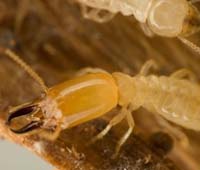 COLOR: Creamy brown
COLOR: Creamy brown
LEGS: 6
SHAPE: Long, narrow, oval
SIZE: 1/8“
ANTENNAE: True
DESCRIPTION: Subterranean termites live in underground colonies or in moist secluded areas aboveground that can contain up to 2 million members. They build distinctive "mud tubes" to gain access to food sources and to protect themselves from open air. Termite colonies are organized into castes depending on tasks -- workers, soldiers and reproductive. The characteristics of a subterranean termite are dependent on the termite's role in the colony. Cream-colored Worker subterranean termites are 1/8 to 3/8's of an inch in length. Soldier subterranean termites are of a similar body length, but are distinguished by their powerful mandibles. Solider termites have cream-colored bodies and brown heads. Reproductive subterranean termites are approximately one inch long.
THREATS: Subterranean termites are by far the most destructive species. They can collapse a building entirely, meaning possible financial ruin for a homeowner. The hard, saw-toothed jaws of termites work like shears and are able to bite off extremely small fragments of wood, one piece at a time.